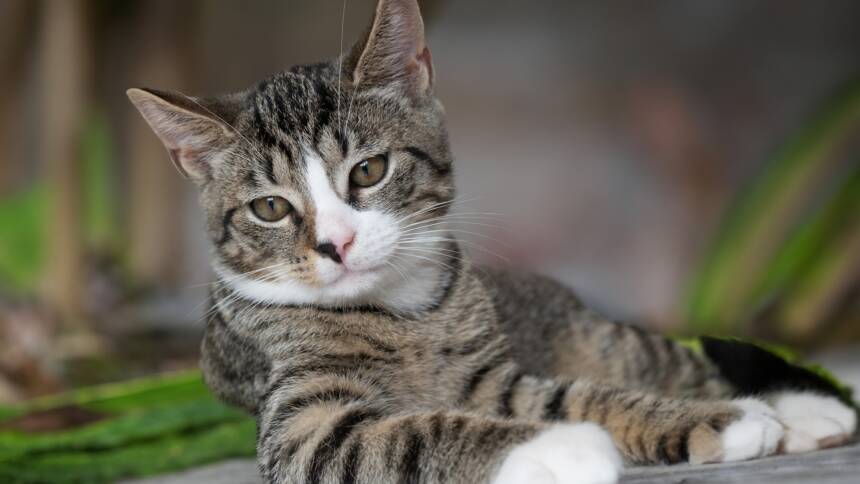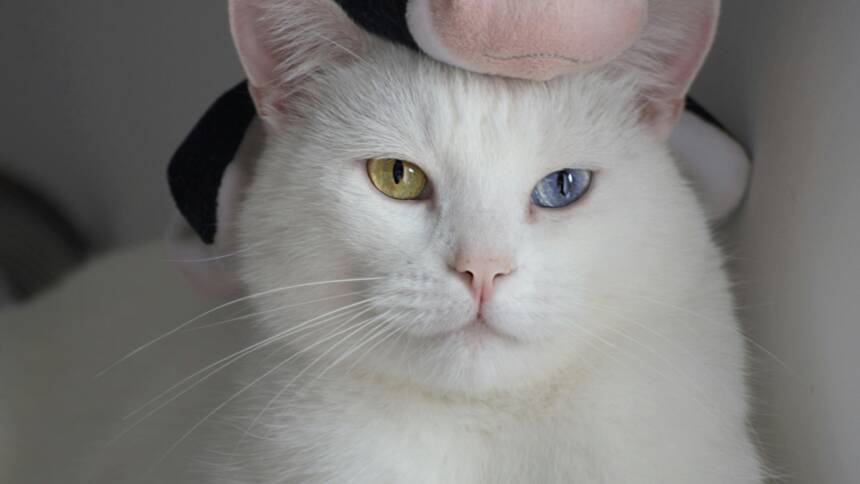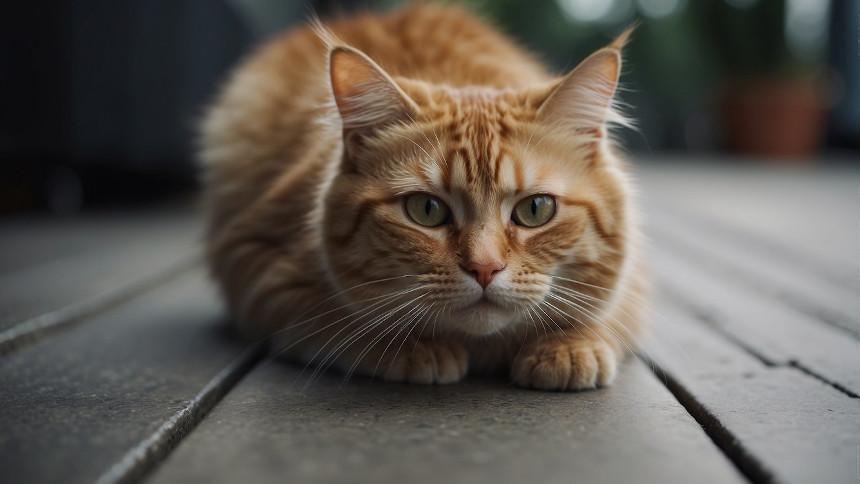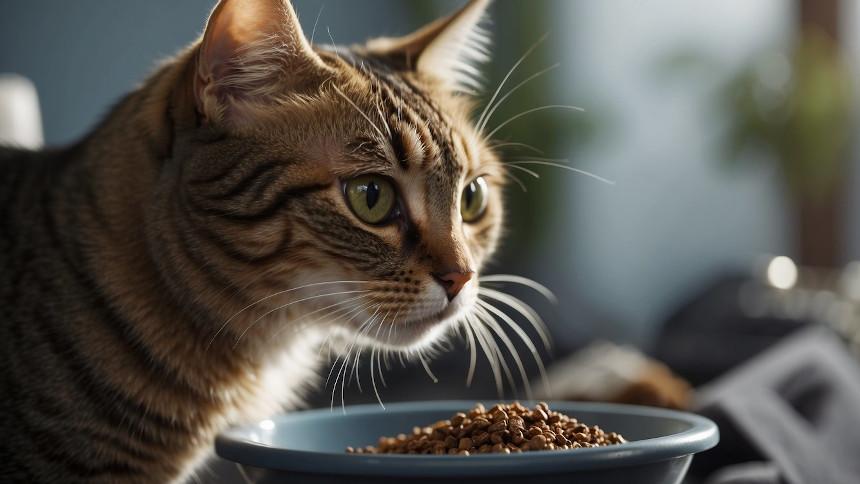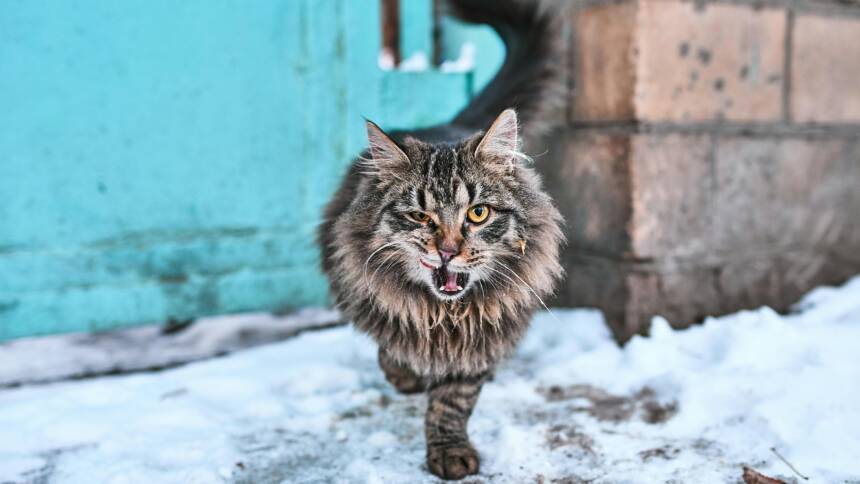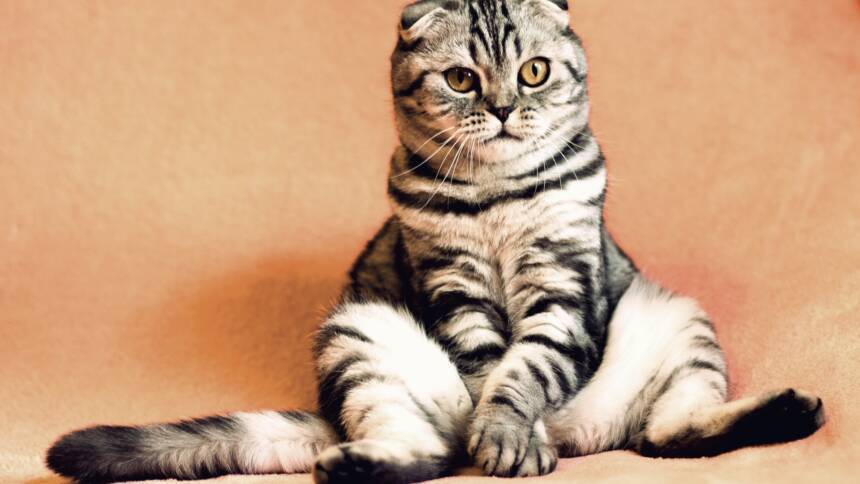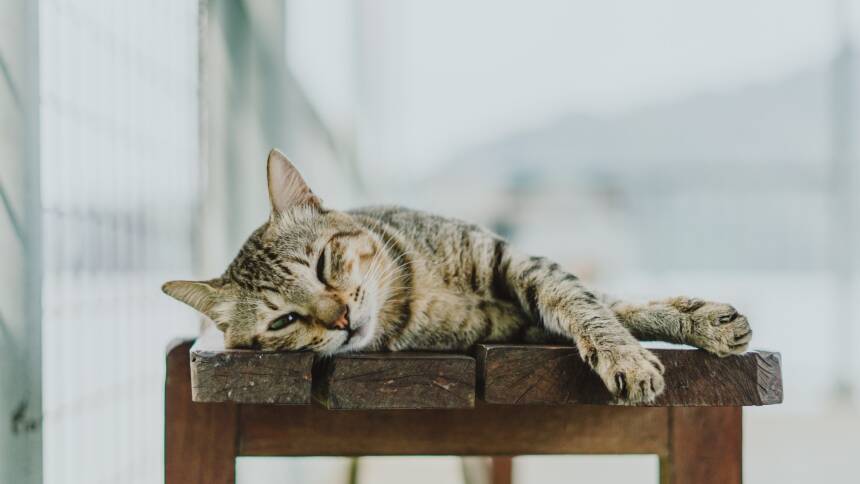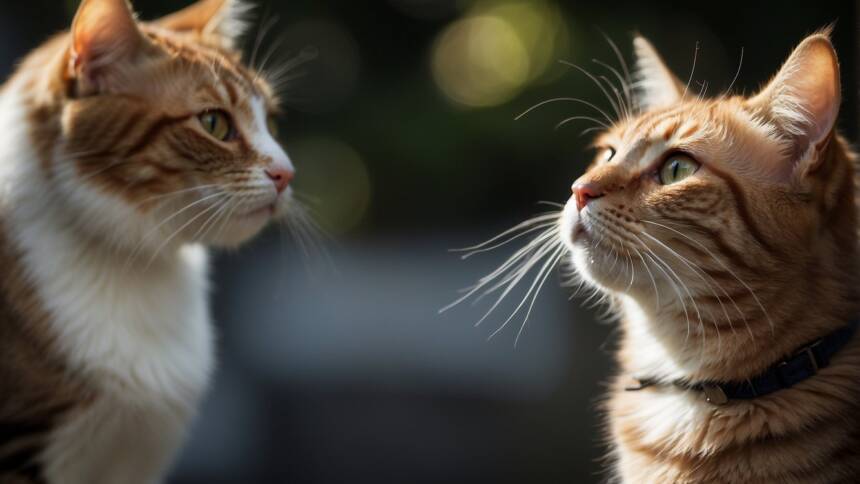Cats often engage in grooming as a natural behavior that promotes cleanliness, skin health, and provides comfort. Through licking, chewing, and nibbling, cats manage their fur and skin, ridding themselves of excess hair and potential parasites. However, when a cat begins to groom excessively, particularly focusing on areas like the back legs, it could be a signal of underlying issues. Overgrooming, where a cat persistently licks or chews at their fur to the point of causing bald spots or skin lesions, typically indicates that something is amiss, whether it’s physical discomfort or psychological distress.
Stress can be a significant factor in a cat’s overgrooming behavior. Changes in a cat’s environment, such as a new pet, a move to a new home, or even alterations in the daily routine, can lead to anxiety-induced grooming. Cats crave stability and predictability in their environment. When their sense of security is compromised, overgrooming may become a coping mechanism. Moreover, the act of grooming releases endorphins, which are natural stress relievers, potentially causing the cat to repeat the behavior compulsively in an attempt to self-soothe.
On the other side, the behavior could be driven by medical reasons. Itchy skin due to allergies—to fleas, food, or something in the environment—can lead to increased grooming as cats attempt to alleviate discomfort. Other skin conditions, infections, or external parasites might also cause a cat to focus excessively on grooming particular areas of their body like the back legs. Hence, examining the cat’s environment, observing behavioral patterns, and seeking veterinary guidance become crucial steps to address and rectify overgrooming issues.
Understanding Cat Grooming Behavior
Cats are meticulous self-groomers, and observing their grooming patterns is essential for understanding their well-being. Regular grooming helps cats maintain a clean coat and provides comfort.
Normal Grooming Patterns
Cats typically spend between 30-50% of their waking hours grooming themselves. They use their tongues, equipped with tiny, hook-like structures, to comb through their fur, effectively removing loose hair and debris. This behavior serves multiple functions:
- Hygiene: Keeping the fur clean and free of parasites.
- Temperature Regulation: Spreading saliva on the fur aids in cooling as it evaporates.
- Scent Marking: Distributing their own scent across their body.
When Grooming Becomes Excessive
While grooming is a natural and healthy activity, it can become problematic when a cat over-grooms, particularly in areas like the back legs. Signs of compulsive grooming include:
- Bare Patches: Seeing skin where there should be fur.
- Repetitive Licking: Focusing intently on one area to the exclusion of other behaviors.
Excessive grooming may indicate underlying issues such as stress, allergies, skin infections, or pain. If any abnormal patterns are observed, consulting with a veterinarian is critical to address potential health concerns.
Identifying Overgrooming and Its Symptoms
Overgrooming in cats can often be identified through observable physical changes and alterations in their grooming behavior. These indicators can suggest discomfort or stress prompting a cat to groom excessively.
Physical Signs of Overgrooming
Cats experiencing overgrooming may present distinct physical symptoms. The most obvious sign includes a bald patch, particularly on the back legs. This patch might grow larger as the cat continues to groom excessively. Another visible sign is the appearance of skin sores or irritation in the overgroomed area. Excessive licking that goes beyond a cat’s normal grooming routine can result in the skin underneath becoming red, sore, or even infected.
- Bald patch: Often found on the back legs.
- Skin sores: May be red and irritated from excessive licking.
Behavioral Indicators
Behaviorally, a cat will exhibit increased periods of grooming. Excessive licking of their fur, especially around the back legs, is a primary behavior associated with overgrooming. They may persistently groom even when there are no obvious irritants like fleas or mites. The grooming may seem almost compulsive, with the cat repeatedly returning to lick the same spot.
- Persistent grooming beyond normal patterns
- Itch: May indicate an underlying issue causing the behavior
Common Causes of Overgrooming
In cats, overgrooming is often a symptom rather than a condition in itself. This behavior can be attributed to several factors, broadly categorized into medical and psychological triggers.
Medical Conditions Leading to Overgrooming
Cats suffering from medical conditions often resort to overgrooming, specifically targeting areas like the back legs. Compulsive licking and chewing in these areas may indicate:
- Allergies: Cats can develop allergies to a variety of substances, including food, flea bites, or environmental allergens such as pollen, which cause intense itching and discomfort.
- Fleas: These parasites are a common culprit, leading to excessive scratching and grooming due to the itchy bites.
- Pain: Conditions causing pain, like arthritis, may lead to overgrooming as a soothing mechanism.
- Infection: Skin infections, whether fungal or bacterial, often cause irritation, resulting in persistent grooming behaviors.
Psychological Triggers
Apart from physical causes, cats also experience psychological stressors, leading them to overgroom:
- Stress: Changes in the environment, such as a new pet or household move, can increase anxiety, leading to overgrooming as a coping strategy.
- Discomfort: Emotional distress or boredom due to a lack of environmental enrichment can manifest as compulsive grooming behaviors.
These factors demonstrate that overgrooming is a multifaceted issue, often signaling that a cat is in need of medical attention or a more stimulating environment.
The Link Between Stress and Increased Grooming
Cats often cope with stress by grooming, a behavior attributed to the soothing release of endorphins. Overgrooming of areas such as the back legs can signal underlying stress-related issues.
Stressors Affecting Cats
Cats may experience a range of stressors that disrupt their sense of security and comfort. These stressors can include:
- Changes in the environment: Relocation, new furniture, or even rearrangement of the existing layout.
- Addition or loss of family members: Arrival of a new pet or baby, or the loss of a companion.
- Routine alterations: Shifts in feeding times or the owner’s schedule.
These factors can lead to a significant increase in grooming behavior as cats attempt to self-soothe.
Environmental and Emotional Stress
The environment plays a crucial role in a cat’s mental well-being. A stable and secure environment typically results in a less stressed cat. However, environmental chaos or disruptions can lead to emotional stress, manifesting as overgrooming. Elements of a cat’s environment that can incite stress include:
- Insufficient mental stimulation: Lack of playtime or engagement.
- Territorial challenges: Presence of other cats nearby or in the home.
- Limited access to resources: Inadequate access to litter boxes, food, or water.
Regular observation of a cat’s behavior in relation to their environment is essential in identifying the cause of stress-induced overgrooming.
Diagnosing Overgrooming Issues
Before a cat can receive the appropriate treatment for overgrooming, particularly when it is focused on the hind legs, a thorough and accurate diagnosis must be established. Understanding the underlying cause is crucial to address any medical conditions and provide relief.
Steps for Accurate Diagnosis
- Observation: The veterinarian begins with a detailed history and observation of the cat’s behavior. Owners may be asked to note when the overgrooming started and how frequently it occurs.
- Physical Examination: A complete physical exam is conducted, paying close attention to the condition of the skin, particularly on the back legs where hair loss or skin damage may be evident.
- Identifying Signs: They look for signs of skin infections, inflammation, redness, or lesions that could indicate a medical condition causing discomfort.
- Diagnostic Tests: These may include skin scrapings, cultures, allergy testing, and blood work to rule out or confirm potential underlying causes like parasites, allergies, or systemic issues.
Role of Veterinary Dermatologist
- A veterinary dermatologist specializes in skin conditions and may become involved if initial treatments do not resolve the overgrooming or if the primary veterinarian suspects a complex skin issue.
- They have advanced tools and knowledge to conduct specialized diagnostic tests such as intradermal allergy testing, biopsy, or advanced imaging, which can pinpoint specific allergens or identify elusive underlying causes.
Recognizing overgrooming and its patterns is key in determining whether it stems from a behavioral issue or a medical condition needing intervention from a veterinarian or a specialist like a veterinary dermatologist.
Treatments and Interventions
When a cat overgrooms its back legs, it’s important to address both the physical and psychological aspects of the condition. Treatment typically involves medications to address any underlying physical issues and modifications to the cat’s environment or behavior to reduce stress and enrich their surroundings.
Medications and Topical Treatments
A veterinarian may prescribe medications if an underlying disease is identified. These can include:
- Antiparasitic treatments: to eliminate parasites such as fleas that could be causing itchiness.
- Anti-inflammatory drugs: for conditions like allergies which can reduce skin inflammation and discomfort.
- Antibiotics or antifungals: if a skin infection is detected.
In cases of psychogenic alopecia, where overgrooming is due to stress, anti-anxiety medication may be prescribed to manage the cat’s stress levels. Application of medical shampoos or topical ointments might be recommended to treat any skin lesions or to soothe irritated skin.
Behavioral and Environmental Modifications
Behavioral and environmental changes are crucial for reducing stress and providing mental stimulation, which can prevent or reduce psychogenic overgrooming. These modifications include:
- Enrichment: Incorporating more playtime, interactive toys, or puzzle feeders to engage the cat’s mind and reduce boredom.
- Stress Reduction: Creating a calm environment, limiting loud noises, or disturbances that may cause the cat anxiety.
- Routine: Maintaining a consistent daily routine to provide the cat with a sense of security.
Implementing these strategies can help alleviate the cat’s need to overgroom and promote healthier grooming habits and overall well-being.
Preventing Overgrooming
Overgrooming in cats can be addressed through dietary management and environmental enrichment, ensuring that nutritional needs are met and stressors are minimized.
Dietary Considerations
A cat’s diet plays a critical role in their overall health and well-being. To prevent overgrooming:
- Ensure a balanced diet with all essential nutrients.
- Consider a hypoallergenic diet if food allergies are suspected, under veterinary guidance.
- Provide frequent, small meals to mimic natural feeding patterns and reduce stress.
Environmental Enrichment
A stimulating environment can alleviate stress and distract a cat from overgrooming. Consider the following:
- Routine: Maintain a consistent schedule for feeding, play, and litter box cleaning to provide stability.
- Play: Engage the cat with daily play using a variety of toys to satisfy their natural hunting instincts.
- Litter Box: Keep the litter box clean and in a quiet, accessible area to reduce litter box aversion or stress.
Offering vertical spaces and hiding spots can also enhance a cat’s sense of security and enrich their environment.
Living with a Cat Prone to Overgrooming
Living with a cat that overgrooms, especially its back legs, requires understanding the triggers and implementing daily routines to alleviate stress as well as adopting long-term management strategies.
Daily Routines to Reduce Stress
To mitigate stress-related overgrooming in cats, it’s crucial to establish consistent daily routines. A structured schedule provides stability, which can significantly reduce anxiety levels in cats. Here are practices to incorporate into daily life:
- Scheduled Playtime: Engage the cat in play at the same times each day to promote exercise and the release of endorphins.
- Interactive Toys: Offer a variety of interactive toys to keep the cat mentally stimulated.
- Safe Spaces: Ensure the cat has access to quiet, safe spaces to retreat when feeling overwhelmed.
- Consistent Feeding: Stick to a regular feeding schedule to avoid unnecessary stress.
Long-Term Management Strategies
A holistic approach is necessary for the long-term management of a cat’s overgrooming behavior. These strategies involve both environmental adjustments and potential medical interventions:
- Veterinary Check-Ups: Regular visits to the vet can help monitor the cat’s health and catch any medical issues that might contribute to overgrooming.
- Behaviorist Consultation: If necessary, consult with a feline behaviorist to identify underlying stressors and develop a personalized behavior modification plan.
- Environmental Enrichment: Maintain a stimulating environment with scratch posts, window perches, and puzzle feeders to prevent boredom.
- Allergy Management: If allergies are a suspected cause, work with a vet to identify potential allergens and modify the cat’s diet or environment accordingly.
By focusing on these daily routines and long-term strategies, cat owners can help manage and reduce the incidence of stress-related grooming behaviors.
